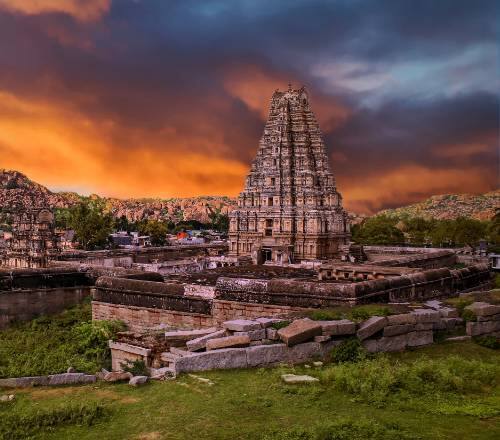Stay logged in to proceed with bookings, orders and offers.
On changing the terminal, you will loose items in your cart. Are you sure you want to change your terminal?
Meghalaya's mystical root bridges is a remarkable fusion of natural beauty and human ingenuity.
In the breathtaking landscapes of Meghalaya, where the clouds embrace the land, I discovered a captivating wonder. Walking on living tree root bridges felt like bouncing on a trampoline and sailing on a wobbly ship deck, all at once. These incredible structures, nurtured by the skilled Khasi and Jaintia tribes, serve as portals that transport visitors into a realm where reality and dreams converge. With each step taken on the living roots, I felt a connection to the natural world. When exploring the offbeat beauty of Meghalaya, a journey to the remarkable root bridges is an experience not to be missed. Meghalaya's Living Root Bridges have gained the recognition being one of the many UNESCO World Heritage Sites. Referred to as "Jingkieng Jri" by the locals, these remarkable structures grace approximately 100 locations, and across 72 villages in the East Khasi Hills and West Jaintia Hills districts of this mountainous state.
The rubber fig trees are from the Ficus Elastica variant. They are large tropical plants that originated in south and southeast Asia. The aerial roots of these trees take decades to grow but last over 500 years. To create sturdy crossways, the abundant aerial roots were guided through hollow canes of Areca nut palms. The roots are strengthened through the years, creating stable structures with secondary growth and joining each other. Local inhabitants, faced with the challenge of crossing swelling waterways during the monsoon season, devised remarkable plans for building the suspension bridges. I embarked on an exciting journey to discover five of these root bridges near Shillong, Meghalaya.
I started hiking early from Sohra to Tyrna village. The first stop was the village of Nongthymmai, where I came across the Ritymmen Root Bridge. This 100-foot-long crossing requires 3,600 steps and is known as the longest of these living root bridges. Spanning across the Umiam River, it is a vital connection between local villages. It was an unforgettable sight in the wilderness and left us spellbound for some time. Walking across the Ritymmen Bridge, I can't help but appreciate its strength. The intertwined roots hold firm, providing a safe passage for all travellers. The bridge also symbolises the unity of the locals of nearby villages, who work together to maintain this natural wonder.
Our journey continued to the Umshiang River in Nongriat village, where the fascinating Double-Decker Root Bridge is located. I navigated my way through lush green forests, enjoying the symphony of chirping birds and flowing water. After crossing many bamboo suspension bridges, I reached Nongriat. Here, the Khasi people have maintained a unique bridge that consists of two layers of living tree roots. Approaching the bridge, I heard water cascading down from the nearby Rainbow Falls. The air was misty, and a rainbow reflected on the spray of the waterfall. As I stepped on the lower bridge, I could feel the strength of the roots that had grown through the decades. Above us, the upper level of the bridge stretched across a misty sky. It is a marvel to witness how these trees have grown over many years to create this living work of art. The upper level, 20 meters in length, is a short hike.
Our next stop was Mawsaw Root Bridge, which was a half-hour trek from Umshiang River. Walking through the tropical forests of Meghalaya, I felt like I had stepped back in time. I passed through the steel-cabled root bridge and took a plunge into a nearby natural swimming pool.
My final stop was Siej village near Ummunoi River. As I approached the bridge, the air was filled with floral scents and songs of birds echoing through the trees. Known to be one of the oldest bridges in the region, the intricately designed Ummunoi Root Bridge is quite a sight to behold. Meghalaya's root bridges are living symbols of human ingenuity and the power of nature. Concluding my journey through the bridges, I found myself in deep admiration, not only of nature's bounty but also of human capacity in the face of challenges.





The Adani One expressly disclaims all liability, direct and indirect, in respect to actions taken or not taken based on any or all the contents of this Blog. The Blog is an opinion of the contributor based on the collation of data from various sources and is provided only for information purpose. Adani One does not canvass, advertise, solicit, invite or induct for any product, merchandise, information, brand or any other materials mentioned in the Blog, nor does it obtain any monetary benefit from the same. Reader is advised to read and apply his/her intellect and discretion in this regard. Any Intellectual Property mentioned in this blog belongs to the rightful owner. We do not intent to claim any interest over the same.